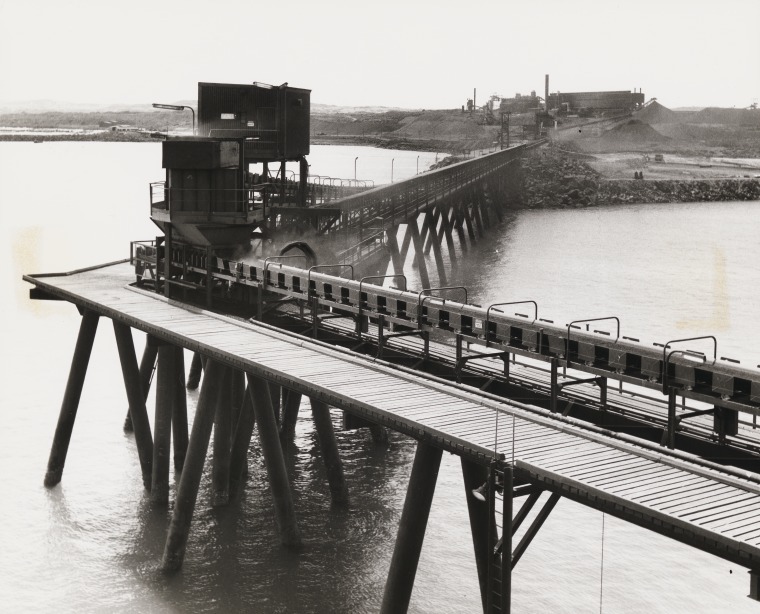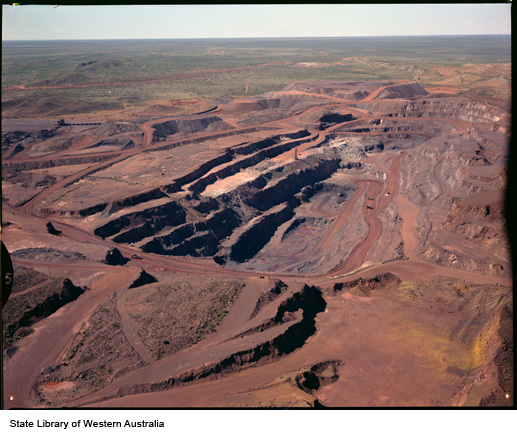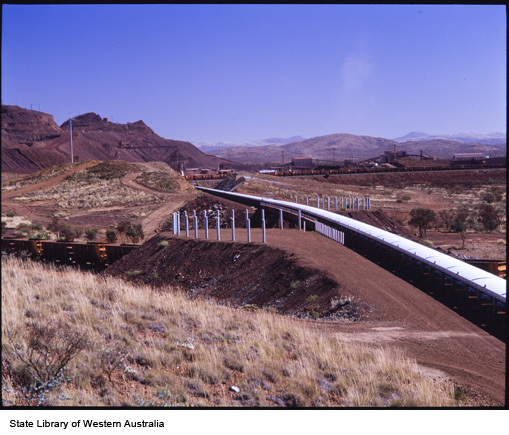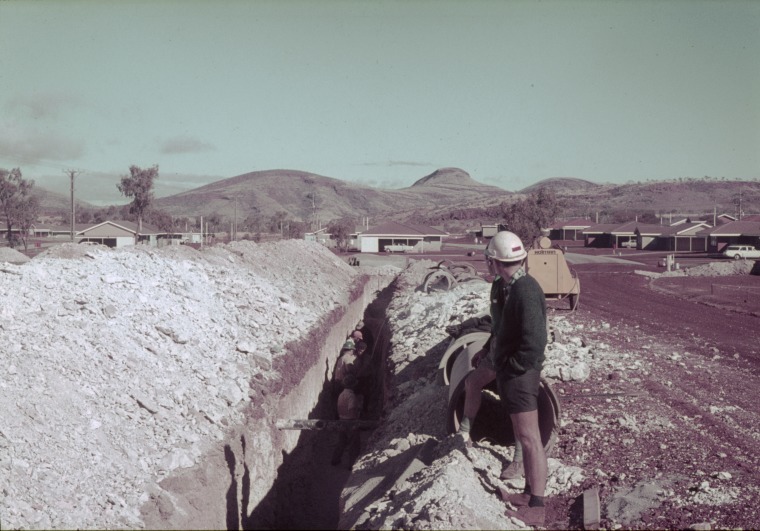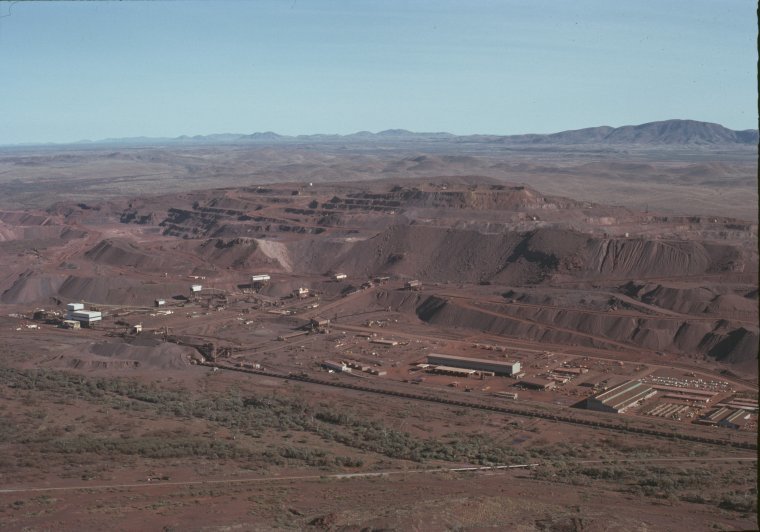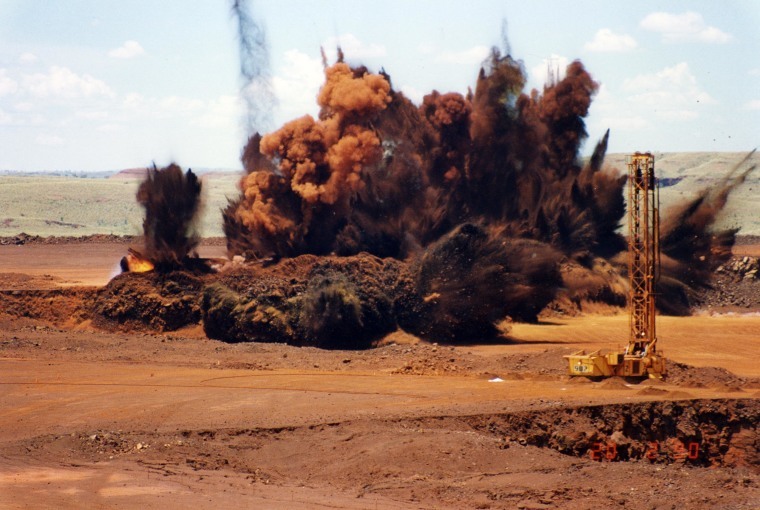Iron Ore
Extensive iron ore deposits were identified around Western Australia in the 1800s, but they were regarded as worthless without nearby coal. While small deposits east of Perth were mined around 1899, the industry only started to evolve with later mining in the far north and the Pilbara.
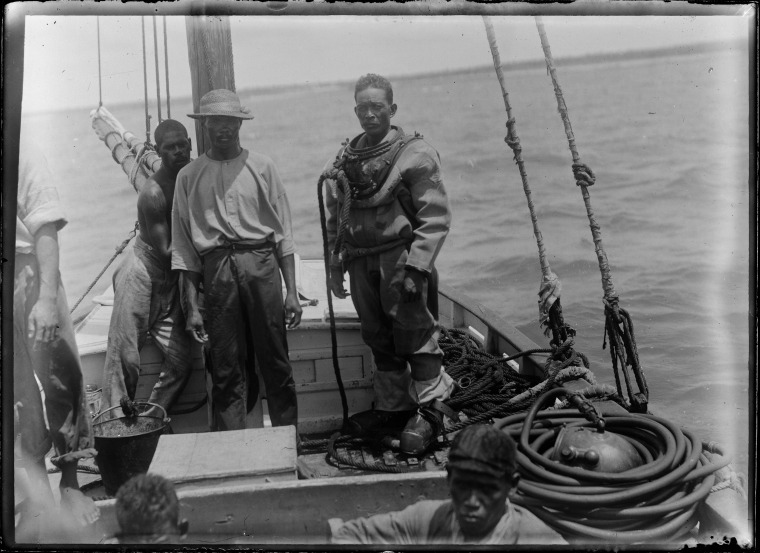
Pearl diver and other crew on pearl lugger, possibly near Broome
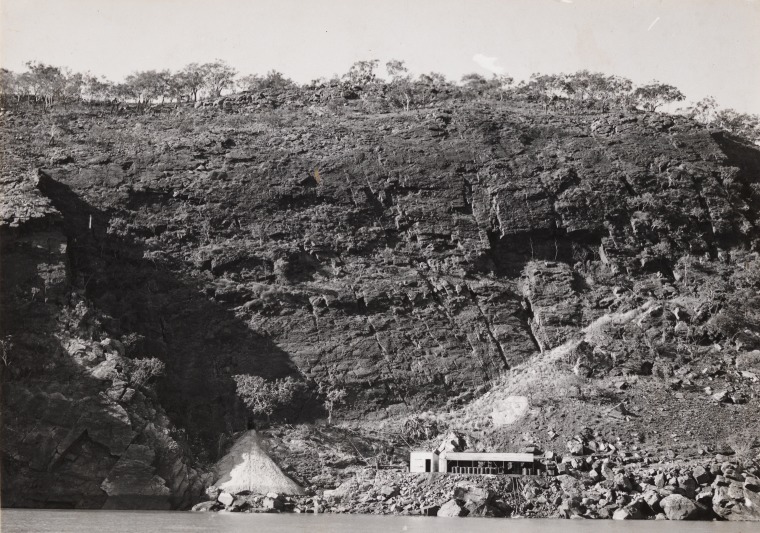
Ore deposits at Cockatoo Island

Iron ore mining on Cockatoo Island
Cockatoo and Koolan Islands
In 1907, small-scale mining began on Koolan Island, an island off the Kimberly coast; large-scale mining was first attemped by the Yampi Sound Mining Company during the 1930s. In 1936 the company announced their intention to supply iron ore to Japan. Before an export industry could be established, the Commonwealth government embargoed all exports of iron ore in 1938. The embargo was an attempt to protect national interests against a militaristic pre-World War II Japan.
Iron ore was mined on Koolan Island for domestic use in a small charcoal-iron plant established by the state government at Wundowie in mid-1940s. The nature and scale of ore extraction increased dramatically during the 1950s and 1960s.
The Pilbara
The Goldsworthy deposit was identified in 1938 and extensively surveyed in the 1950s by the Mines Department. The promise of extensive iron ore deposits in the region supported the state government's lobbying of the federal government to end the export embargo. In 1960, the Commonwealth government partially lifted the embargo on exporting iron ore to Japan.
In calling for tenders to develop the Goldsworthy deposit, the government also invited further exploration for iron ore. Significant deposits of iron ore were found and production soon began at Goldsworthy, Tom Price and Newman (all 1969), Pannawonica (1972) and Paraburdoo (1973).
By the end of the 1960s, iron ore was generating enough wealth that Western Australia was able to stop applying for money from the Commonwealth Grants Commission.
From 1980 to 2000, further mine developments allowed the major companies to expand production and extend the life of existing mines. The opening of the Yarrie mine in 1993 extended the Goldsworthy operations, and in September 1994, Portman Mining began exporting iron ore from the re-opened Koolyanobbing mine.
Iron ore mining has grown into a massive industry over the last fifty years. Overall production reached 20 million tonnes a year in 1968, steadily increasing to 70 million in 1973, 150 million in 1998, 474 million in 2011 and 719 million in 2015.
In 2015-16 the industry was worth around $48.4 billion. It provided royalties to the state government of around $3.5 billion. In 2017 Western Australia was the largest iron ore producer and exporter in the world. The major iron ore producers in Western Australia include BHP Billiton, Rio Tinto, Fortescue Metals Group (FMG) and Roy Hill.
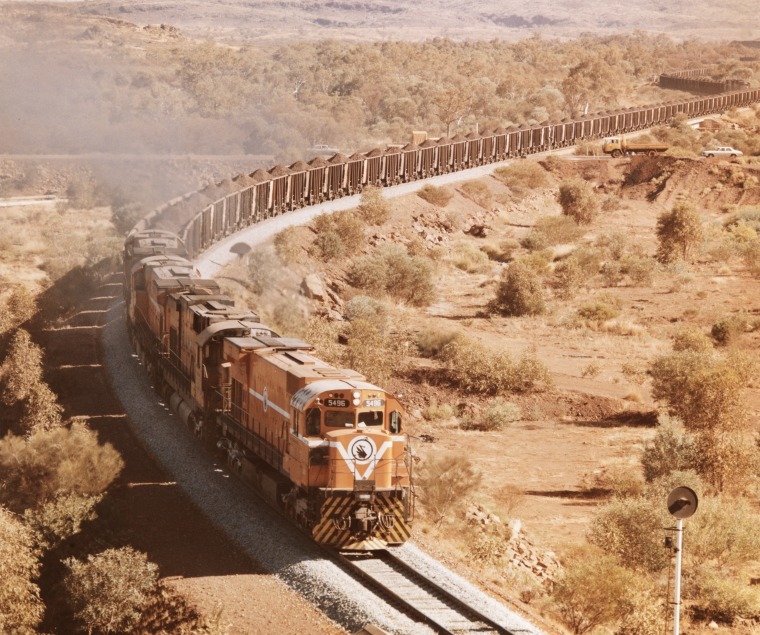
Mt Newman Ore Train
